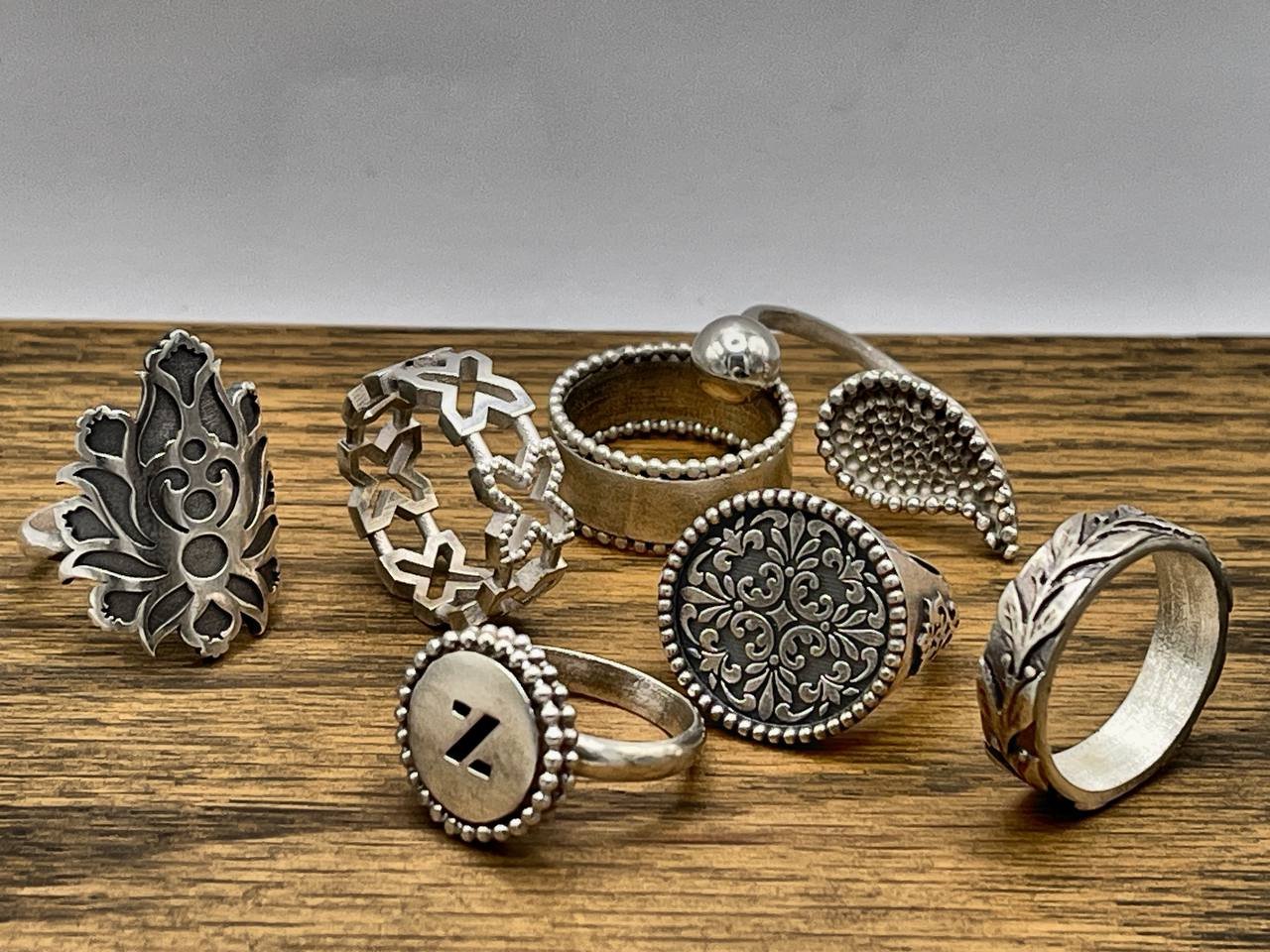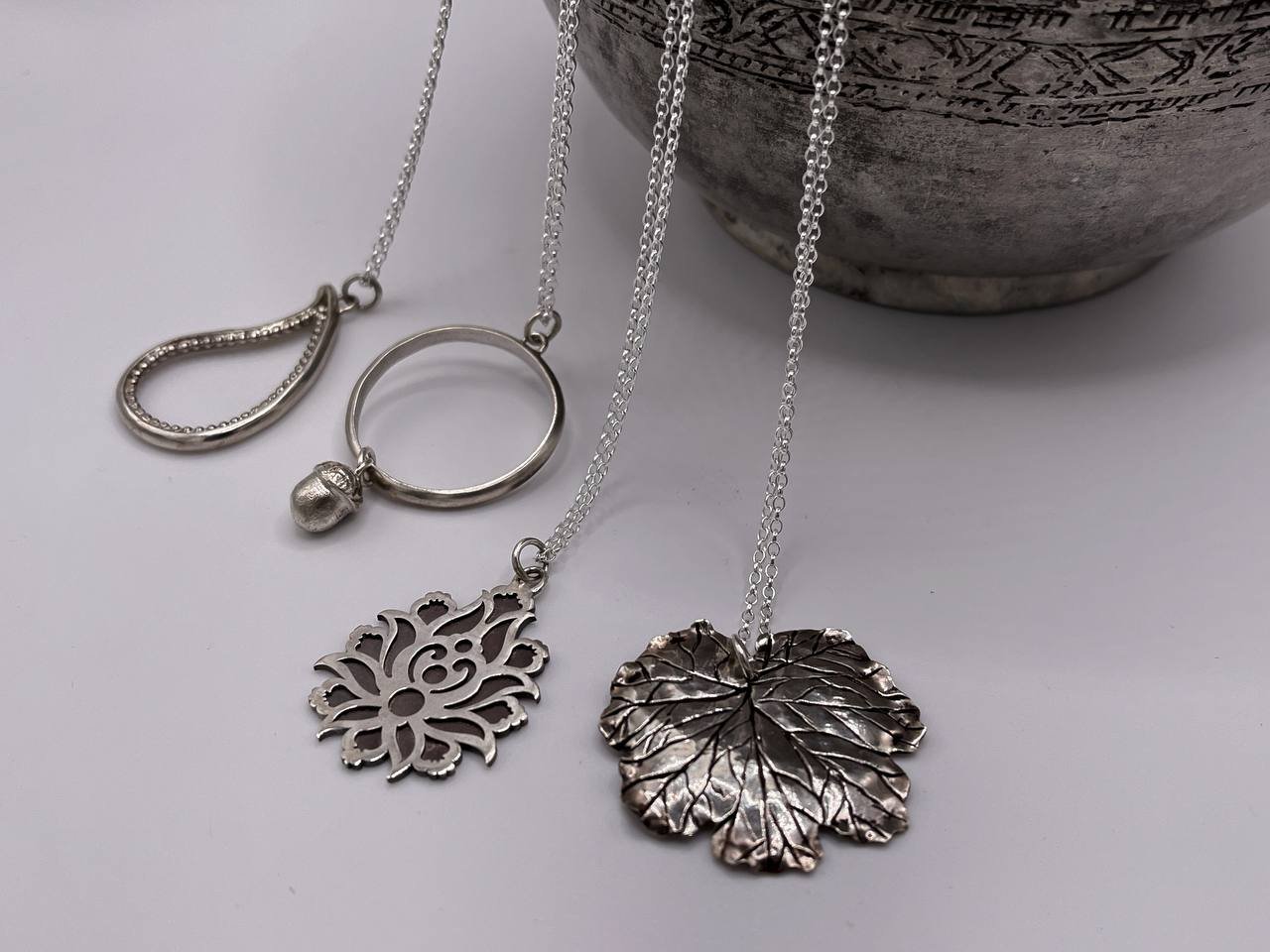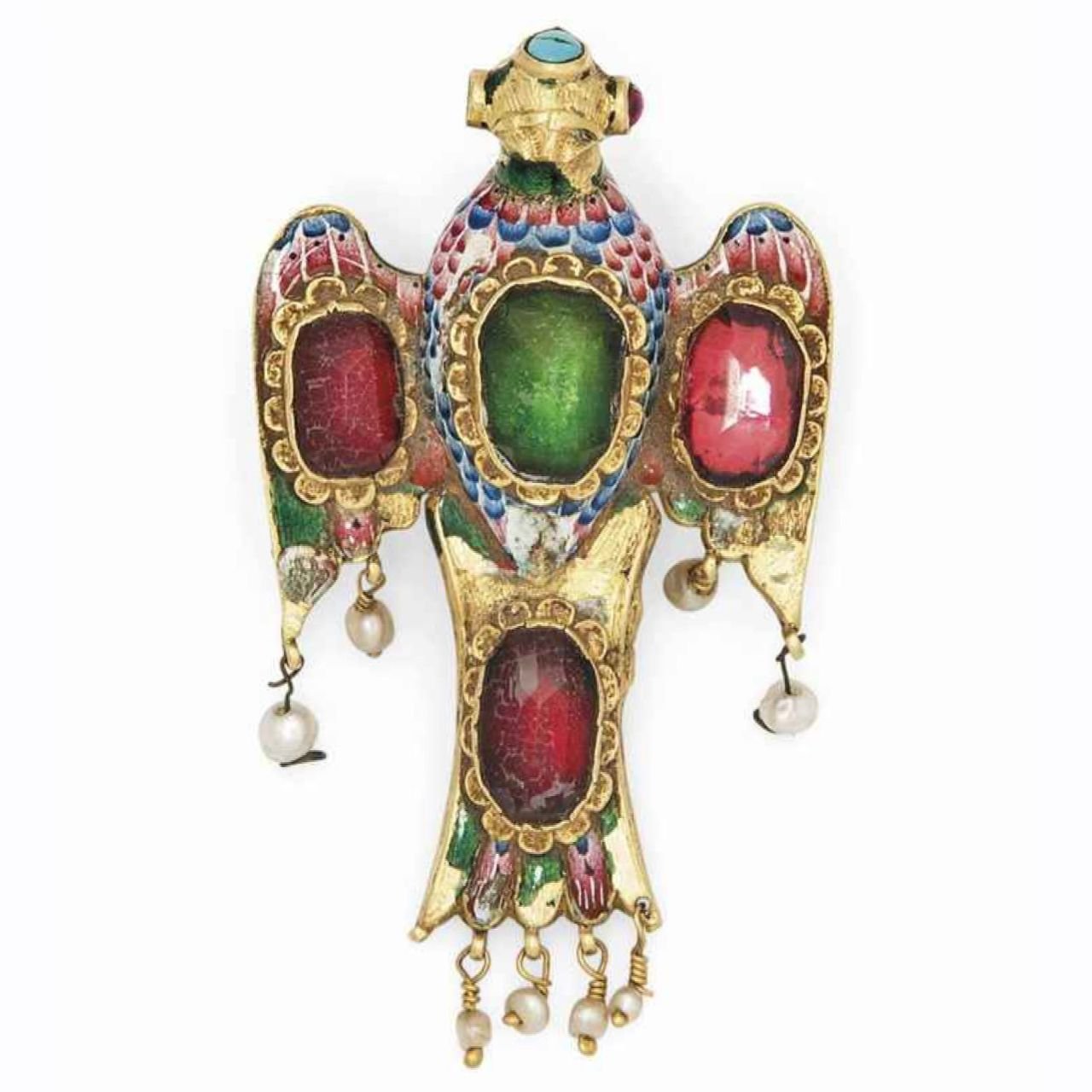Persian jewellery is renowned for its intricate designs, symbolic motifs, and masterful craftsmanship. Among its many distinguishing features, the use of organic textures stands out as a key element that adds depth, movement, and natural beauty to the pieces. These organic textures often draw inspiration from nature, blending seamlessly with the symbolic and geometric patterns that characterize Persian art. From representations of plants and animals to the incorporation of natural gemstones, Persian jewellers have long used organic forms to create pieces that resonate with both aesthetic and cultural meaning.
Origins and Symbolism of Organic Textures in Persian jewellery
Persian culture has always been deeply connected to nature, as seen in its art, poetry, and spiritual traditions. Nature’s elements—flowers, leaves, animals, and water—often symbolize growth, life, and divine harmony. This relationship between nature and Persian art finds its expression in jewellery, where organic textures evoke natural beauty and spirituality.
In ancient Persia, Zoroastrianism emphasized the importance of the natural world, and elements such as fire, water, earth, and air were considered sacred. This reverence for nature influenced artistic expressions, including jewellery design, where organic forms were not only decorative but also carried deeper meanings. For instance, floral motifs symbolized renewal and life, while depictions of animals like lions or birds represented strength and spiritual elevation.
During the Islamic period, Persian art continued to draw on natural elements, but the motifs became more stylized, often blending geometric and organic forms. Jewellers of this period developed intricate techniques to incorporate these textures, using natural forms to convey metaphors of divine creation and cosmic harmony.
Natural Motifs and Inspirations
Organic textures in Persian jewellery primarily draw inspiration from flora and fauna. Persian artists were skilled at capturing the elegance and complexity of the natural world, and this was reflected in the jewellery designs that have persisted through centuries.
1. Floral and Plant Motifs
Floral motifs are one of the most prominent organic elements in Persian jewellery. Designs often feature leaves, vines, flowers, and buds, symbolizing life, beauty, and abundance. These motifs are either carved into the metal or delicately etched onto the surface of the jewellery. Flowers like the lotus, rose, and tulip are commonly depicted, each carrying its symbolic significance.
For example, the lotus, a common motif in ancient Persian art, represents purity and rebirth, while the rose, a symbol deeply embedded in Persian poetry and culture, often symbolizes love, passion, and divine beauty. Persian jewellers skillfully incorporated these floral motifs into brooches, pendants, and earrings, using gold, silver, and gemstones to bring these natural textures to life.
2. Animal and Bird Designs
Animals and birds are other important sources of inspiration for organic textures in Persian jewellery. These motifs are often highly stylized, representing both physical strength and spiritual freedom. The lion, a symbol of power and authority, was frequently featured in Persian jewellery. Bird motifs, particularly the mythical Simurgh or peacock, were used to convey notions of beauty, grace, and transcendence.
Jewellery pieces often depicted these creatures in motion, with finely detailed feathers, scales, and fur textured into the metal to create a sense of realism and dynamism. The combination of organic forms with more abstract, symbolic interpretations of these animals added a layer of complexity to the designs.
3. Gemstone Textures
The use of organic gemstones in Persian jewellery is another way organic textures were incorporated. Persian jewellers were known for their skill in sourcing and working with semi-precious stones like turquoise, carnelian, agate, and lapis lazuli. These stones, often left in their natural form or minimally polished, added organic textures that contrasted beautifully with the metalwork.
Turquoise, in particular, held great significance in Persian culture, symbolizing protection and power. Its natural veins and imperfections were celebrated as part of its beauty, offering a unique texture to rings, pendants, and other jewellery pieces. Lapis lazuli, with its deep blue hue and gold flecks, evoked the night sky and the cosmos, adding a rich, organic element to jewellery designs.
Techniques for Creating Organic Textures
Persian jewellers employed a variety of traditional techniques to create the organic textures that characterize their jewellery. These methods passed down through generations, enabled them to capture the essence of nature and integrate it into finely crafted works of art.
1. Repoussé and Chasing
Repoussé is a metalworking technique where the design is hammered into the back of a piece of metal, creating a raised surface. Chasing is the complementary process, where the front of the metal is worked to refine and detail the design. These techniques were frequently used by Persian artisans to create three-dimensional organic textures, such as the veins of leaves, the delicate curves of petals, or the contours of an animal’s body. This combination allowed for dynamic, textured surfaces that mimicked the natural world.
2. Engraving
Engraving was another common technique used to add fine, intricate textures to Persian jewellery. Jewellers would carve detailed lines and patterns into the surface of the metal, often creating complex floral designs or animal motifs with great precision.
3. Stone Inlay and Cabochon Cutting
Stone inlay and cabochon cutting were used to accentuate the organic nature of gemstones in Persian jewellery. Jewellers would set polished cabochon stones into the metalwork, allowing the natural textures of the stone to shine. These techniques highlighted the organic quality of the materials, with the smooth, rounded surfaces of the stones contrasting against the intricate metal detailing.
Inlaying stones like turquoise, carnelian, or lapis lazuli into gold or silver jewellery created a harmonious blend of metal and mineral, celebrating the natural textures of both. The juxtaposition of polished gemstones with the detailed, textured metal enhanced the organic feel of the piece.
4. Enamelling
Enamelling is a decorative technique used to add vibrant colour and texture to metal surfaces, and it played a significant role in Persian jewellery design. Persian enamelling, known as Mina Kari, involves applying finely ground glass or powdered minerals to metal surfaces, which are then fired at high temperatures. This process creates smooth, colourful surfaces that often feature intricate patterns, ranging from floral motifs to abstract designs.
In Persian jewellery, enamelling was frequently used to complement organic textures by adding bright colours to floral or animal motifs. For instance, a floral design might feature petals filled with deep blues or greens, created through the enamelling process, which adds both vibrancy and an additional layer of texture to the piece.
Enamelling not only contributed to the aesthetic appeal of Persian jewellery but also symbolized the rich natural landscape of Persia. The vivid hues evoked the lush gardens, vibrant flowers, and starry skies often depicted in Persian art. By combining enamelling with organic textures, jewellers could capture the beauty of nature in more lifelike, colourful forms.
5. Filigree: The Art of Delicate Metalwork
Another key technique in Persian jewellery is filigree, a method of crafting intricate designs using fine threads of metal, usually gold or silver. Filigree work involves twisting and weaving these thin wires into lace-like patterns, which are then soldered to create delicate and elaborate designs. This technique was widely used in Persian jewellery to depict organic forms, particularly in floral and vine patterns.
Filigree allowed jewellers to create jewellery with an airy, lightweight quality, while still maintaining intricate detail. The technique was particularly effective for representing the delicate nature of leaves, tendrils, and vines, which could be twisted and shaped to resemble their natural counterparts. The fine metalwork added texture and depth to the designs, enhancing their organic quality.
In addition to floral and plant motifs, filigree was used to create geometric patterns that mimicked the natural symmetry of snowflakes, stars, or honeycombs. The versatility of filigree enabled Persian jewellers to blend organic forms with geometric precision, creating a harmonious balance between the natural world and human craftsmanship.
Organic textures in Persian jewellery reflect the deep connection between Persian culture and the natural world. By drawing inspiration from flora, fauna, and natural gemstones, Persian jewellers were able to create designs that were not only beautiful but also infused with spiritual and cultural meaning. The careful use of repoussé, engraving, filigree, and gemstone inlay techniques allowed artisans to capture the essence of nature, transforming precious metals and stones into dynamic and intricate works of art.
Whether through delicate floral patterns, majestic animal motifs, or the textured beauty of natural gemstones, Persian jewellery continues to showcase the timeless appeal of organic forms. These designs remain a testament to the artistic ingenuity of Persian jewellers and their ability to find harmony between the natural world and human creativity.






